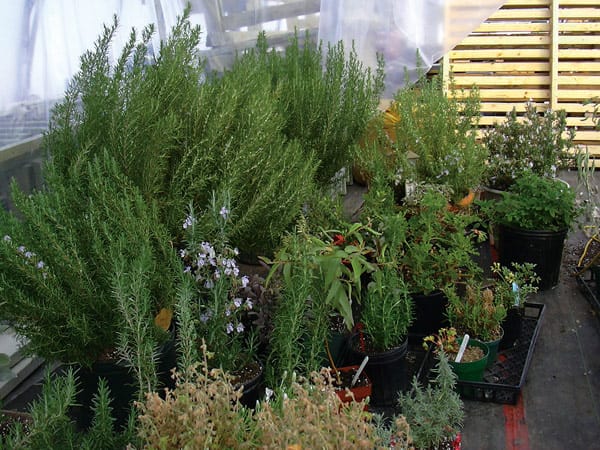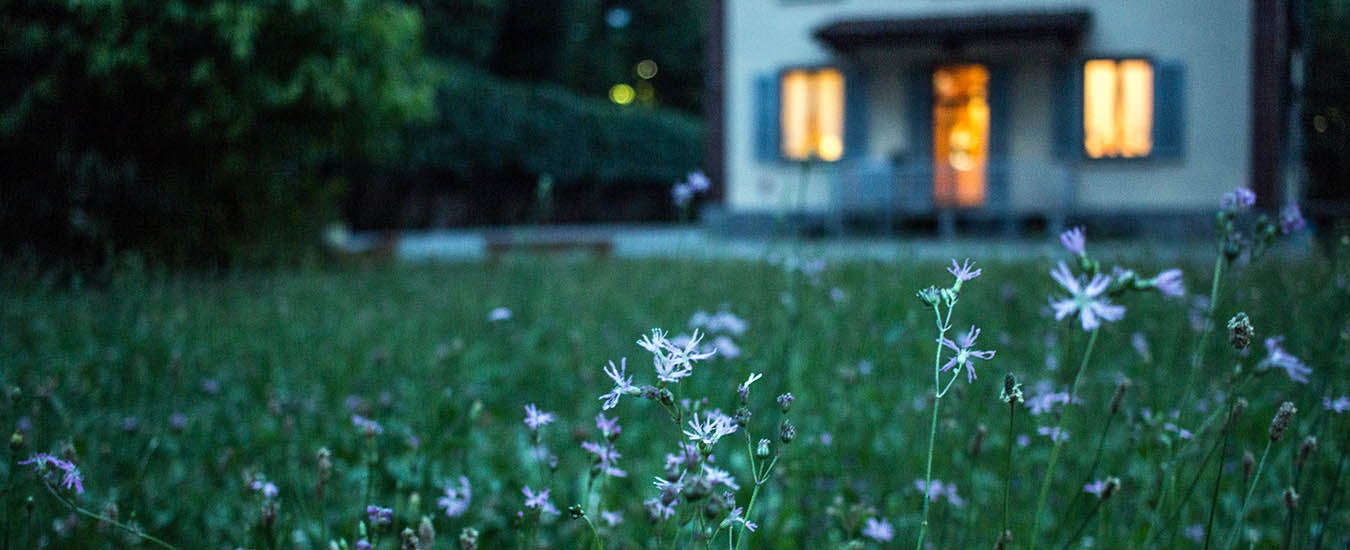The Allure of Fresh Herbs
Beautiful bountiful herbs Fresh from your garden to kitchen—and perhaps a few sprigs for the bath—herbs offer a seasonal abundance of colour and character.
Suppertime, and you’re putting your culinary prowess to work. You slip out the kitchen door to a bed of herbs where you snip some savory, pull some parsley, chop some chives. You pick a few blooms of nasturtiums, calendula and viola to decorate a sidedish or place in a vase. Because you’ve got a bit of time to spare before supper is ready, you pour some lavender salts into the tub and relax into a soothing soak. Ah… aren’t herbs wonderful?
People used to think of parsley, sage, rosemary and thyme when they heard the word herb, with perhaps lavender, mint and basil thrown in for good measure. But depending on the use, a purple coneflower is considered a herb, as are roses, calendula, and common weeds such as coltsfoot and St. John’s wort. Probably the best definition of a herb is that it’s a plant whose roots, stems, leaves, flowers or fruits are used for food, medicine, flavouring or scent.
A Little Herbal History
Our relationship with herbs stretches back through time, with evidence of use by the ancient Greeks, Romans and many eastern civilizations. The earliest recorded manuscripts were those of the Greek philosopher Theophrastus, who wrote his De Causis Plantarum around 320 BC, and of Greek physician Dioscorides whose De Materia Medica in 60 AD was to be a profound resource for herbalists and physicians for the next 1,500 years. Then there are the works of Nicholas Culpeper, John Gerard and John Parkinson, whose studies on herbs published in the late 16th and early 17th centuries are still cited by herbal enthusiasts today.
While you can purchase fresh herbs at many supermarkets and farmers’ markets, it’s decidedly rewarding to grow your own. Even if you aren’t interested so much in cooking with herbs, they make wonderful additions to a garden scheme, with a huge variety of leaf colour and texture, flower form and fragrance. Brushing your hand over a lavender plant warmed by the sun, scuffing along a thyme-patched path and watching bees come away from monarda or borage satiated are all pleasures of summer.
Planning Your Herb Bed
Beyond the visual and sensual delights, Jim Bruce of River View Herbs in Maitland, NS, says he asks people who want to start a herb garden what they like to eat. Basil, for example, is beloved of cooks in pesto and many savoury dishes. Time is another consideration. “Unless a person is a great fan of gardening, I recommend planting as many perennial herbs as you can,” he says. “Once established, they need little care. Annuals, like basil, are more work and you need to really want to eat them to work with them.”

Many culinary herbs are native to warm climates; accordingly, the best location for a herb bed is a sunny one. Plants tend to dislike wet feet and will languish in cold, poorly drained soil, a challenge faced by those of us with heavy clay soils. One way around this is to build a raised herb bed, creating a well drained environment for your herb collection to flourish.
Growing Herbs from Seed
You can grow many herbs from seed—and if you’re looking for unusual or old-fashioned varieties, unless you have access to a specialty nursery you’ll need to grow them from seed. To get a headstart on the season, it’s a good idea to start seeds indoors and transplant outdoors after fear of frost is past. One caveat: Trying to start herb seeds indoors on a sunny window is a challenge in Atlantic Canada—we simply don’t get enough sunlight. You’ll need grow lights or a heated greenhouse.
If you’re a novice at growing herbs from seed, note that some seeds need a period of cold in order to break from dormancy and germinate; others need their seed coats nicked. Some require light; others require darkness. Read the package instructions, or consult reference material before you buy the seeds. Also, check the recommended timing for starting them: some plants produce leggy, weak growth if they languish under lights too long before being planted outdoors.
Because basil is unforgiving of cold, damp weather and is susceptible to a variety of pests and diseases, for example, Jim Bruce recommends that it not be planted outside until late June, long after any risk of all but the most uncommon of cold spells has past, so you’d adjust your seed starting date for it accordingly. (Once the warm weather of July and August arrives basil will grow quickly, although most home gardeners find they have never planted enough to suit them.) Before transplanting young seedlings outdoors, harden them off—put them outdoors for a few hours every day for about a week to prepare them for their life in the open.
If you’re buying potted herbs to plant out, select plants with bushy, compact growth, and preferably those not in flower. Gently pinching the top growth of plants will encourage them to branch out, producing more stems and leaves.
Watch Out for the Overzealous Varieties
 There are a few herbs that are wonderful, but overly enthusiastic in the growing department. Many mints spread by underground stems or rhizomes, and ordinary anti-weed measures, like cultivating or trying to dig them up, merely excites them into spreading further. Other herbs spread by self-seeding—if you find cilantro, borage and dill popping up in different places around your yard, don’t be surprised. Dig up young plants and either transfer them to pots to give to friends, or replenish your stock of herbs to harvest.
There are a few herbs that are wonderful, but overly enthusiastic in the growing department. Many mints spread by underground stems or rhizomes, and ordinary anti-weed measures, like cultivating or trying to dig them up, merely excites them into spreading further. Other herbs spread by self-seeding—if you find cilantro, borage and dill popping up in different places around your yard, don’t be surprised. Dig up young plants and either transfer them to pots to give to friends, or replenish your stock of herbs to harvest.
Container Herbs Indoors and Out
It’s nice to have herbs on a patio or near a place where you often sit. As with any container planting, potted herbs will do best if you plant them in generous sized containers. Take care not to overwater them—but don’t let them dry out. Water well when the soil is slightly dry to the touch. Likewise, be sure to follow fertilizer directions, and don’t overfeed plants.
I grow certain thymes, scented geraniums and rosemary in pots all summer and, because they’re tender perennials, bring them inside for the winter, where the rosemary and thyme are “pruned” for culinary use and then put back outside come warm weather. This works fine, providing you have really sunny windows (four hours of sunlight daily); otherwise, plants tend to become spindly, and there isn’t enough sun to help concentrate the essential oils that give herbs their flavour.
